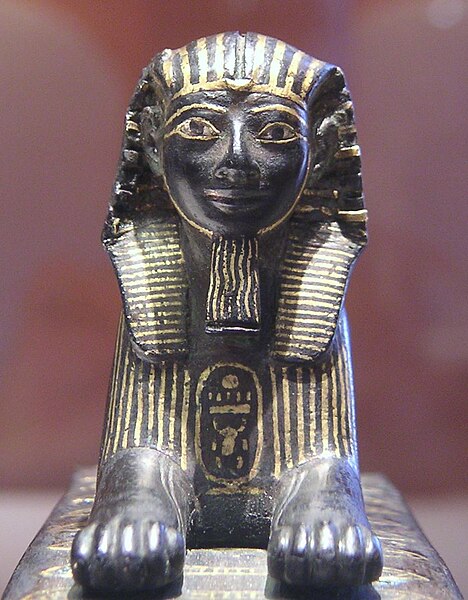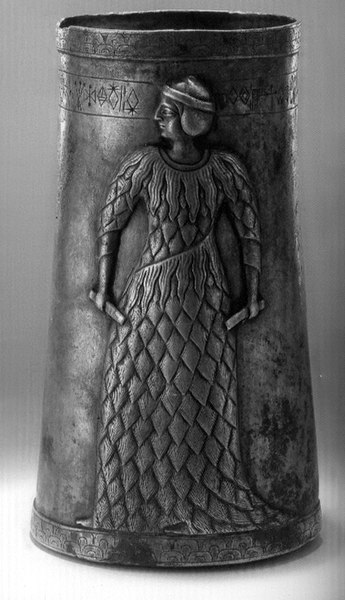Bactria–Margiana Archaeological Complex
The Bactria–Margiana Archaeological Complex (BMAC) is the modern archaeological designation for a particular Middle Bronze Age civilisation of southern Central Asia, also known as the Oxus Civilization. The civilisation's urban phase or Integration Era, was dated in 2010 by Sandro Salvatori to c. 2400–1950 BC, but a different view is held by Nadezhda A. Dubova and Bertille Lyonnet, c. 2250–1700 BC.
Bactria–Margiana Archaeological Complex
Female statuette, an example of a "Bactrian princess"; late 3rd–early 2nd millennium BC; steatite or chlorite and alabaster; 9 × 9.4 cm; Metropolitan Museum of Art (New York City)
Bird-headed man with snakes; 2000–1500 BC; bronze; 7.30 cm; from Northern Afghanistan; Los Angeles County Museum of Art (USA)
Female figurine of the "Bactrian princess" type; between 3rd millennium and 2nd millennium BC; chlorite mineral group (dress and headdresses) and limestone (face and neck); height: 17.3 cm, width: 16.1 cm; Louvre
The Bronze Age is a historical period lasting from approximately 3300 to 1200 BC. It is characterized by the use of bronze, the use of writing in some areas, and other features of early urban civilization. The Bronze Age is the middle principal period of the three-age system, between the Stone and Iron Ages. This system was proposed in 1836 by Christian Jürgensen Thomsen for classifying and studying ancient societies and history. Worldwide, the Bronze Age generally followed the Neolithic period, with the Chalcolithic serving as a transition.
One of the Alaca Höyük bronze standards from a pre-Hittite tomb dating to the third millennium BC, from the Museum of Anatolian Civilizations, Ankara
Hittite bronze tablet from Çorum-Boğazköy dating from 1235 BC, Museum of Anatolian Civilizations, Ankara
Sphinx-lion of Thutmose III 1479–1425 BC
Late 3rd Millennium BC silver cup from Marvdasht, Fars, with linear-Elamite inscription







